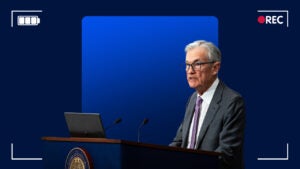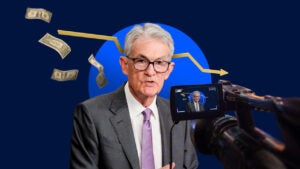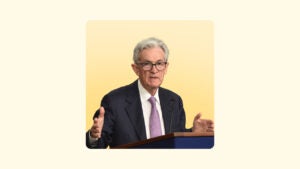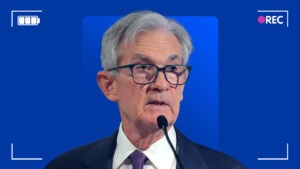Preview of the Fed meeting: 6 pressing questions about the Fed’s next move in coronavirus battle
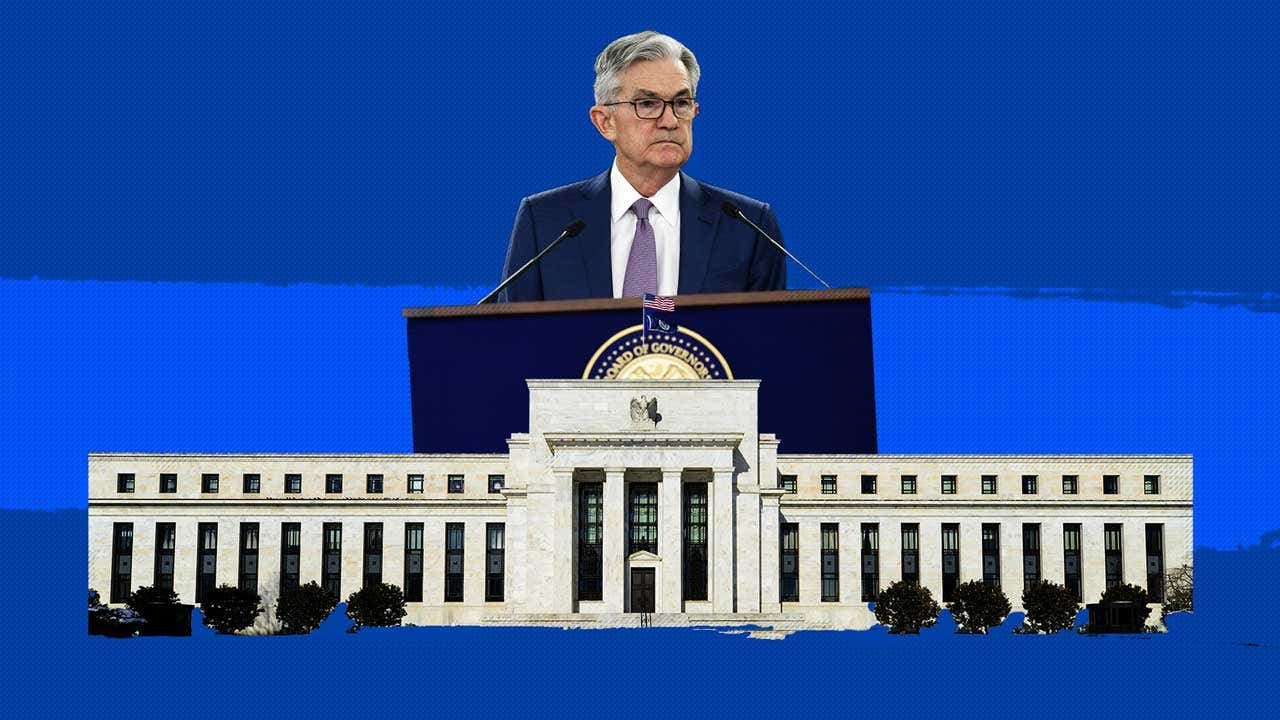
On the brink of the Federal Reserve’s rate-cutting regimen last summer, New York Fed President John Williams pondered an analogy that might help everyday people understand what the U.S. central bank was about to do.
He decided to liken central banks to doctors, compare economic risks to diseases and equate lowering rates to giving someone a vaccine. You want to “vaccinate against further ills. When you only have so much stimulus at your disposal, it pays to act quickly to lower rates at the first sign of economic distress,” Williams told a crowd of economists during a July 2019 speech in New York.
But his careful wordsmithing eight months ago is taking on a new – and quite literal – meaning today.
As Williams and other members on the Federal Open Market Committee (FOMC) gear up for their next rate-setting meeting on March 17-18, they’re preparing to be the first responders to a different economic contagion – this time, it’s an actual one.
The novel, deadly coronavirus has wreaked havoc on global supply chains, the travel industry and financial markets while infecting more than 127,000 individuals across six continents. Fears about the contagion lit a fire under jittery investors, causing an end to the country’s 11-year bull market run. Meanwhile, it’s sent Treasury yields tumbling as market participants clamor for safe-haven assets.
It even led Fed officials to vote on their first emergency rate cut – a 50 basis point reduction, the single biggest move out of the current Fed – since the 2008 financial crisis. And now, officials are poised to follow through with another, (most likely) aggressive cut.
Still, the Fed has no playbook for responding to a deadly disease pandemic, meaning there are lots of questions surrounding its next move. Here are six of the biggest that borrowers and savers should focus on.
1. How much will the Fed cut?
The Fed is widely expected to make another half-a-percentage-point cut come Wednesday, according to Bankrate’s March 2020 Federal Reserve Forecast survey. That could disappoint investors.
CME Group’s FedWatch shows the majority of market participants betting that the Fed makes an even more drastic reduction: a 100 basis point, or full percentage point, cut. Such a move would bring the federal funds rate to a target range of between 0-0.25 percent, which would be as low as it’s ever gone. On the other hand, close to a quarter (or 24.3 percent) of investors are betting the Fed will slash rates by 75 basis points.
While Williams’ research vindicates those bets, Fed officials are still walking a fine line. Much of the data that could tell a story of the economy’s resilience – or fragility – against the coronavirus hasn’t been published yet. If it wants to provide stimulus with a drastic rate cut, the Fed would basically be aiming blindly.
The Fed is also likely finding it challenging to address the U.S. economy when the situation is evolving so rapidly. Since the Fed’s March 3 emergency action, for example, the stock market has plummeted on more bad news about the virus and a lack of fiscal policy response.
“Why the Fed would lower interest rates back down to practically zero ahead of actually seeing what the damage is strikes me as a step too far,” says Scott Clemons, partner and chief investment strategist at Brown Brothers Harriman. “Although there’s no question that the economy is going to be hit from the virus, it’s a mistake until the Fed is able to quantify that hit.”
2. If the Fed doesn’t cut rates to zero next week, how long can it avoid doing so?
Several of Wall Street’s top economists have stated that zero rates are now in their forecasts. But it’s still up in the air whether that happens next week or at meetings – or possibly emergency moves – beyond March 18.
Much of the logic behind cutting to zero goes back to Williams’ July 18 speech. The official argued that the U.S. central bank, when faced with less stimulus, should enact bigger cuts. Those can amplify the effect of monetary policy and juice up the economy quicker.
The Fed also has time on its side to address some of the concerns surrounding the virus, even before it gets any economic data classifying the hit. Inflation has remained tepid for much of the current expansion and well below the Fed’s target. Meanwhile, unemployment is still at a half-century low.
Other experts are saying the Fed might not have time to wait for clear, updated data, given how fragile financial markets are and how rapidly the virus is spreading in Europe and the U.S.
All of this points to signs that Fed officials are going to be grappling with whether – not when – it should start the race to zero, and how quickly that process should be.
“The harms of acting aggressively are small,” says Gus Faucher, chief economist at PNC Bank. “When the Fed looks in the rearview mirror, they’re going to see that there’s been a bad accident back there. If it turns out that the economic data is limited, the Fed can stop cutting rates and then eventually raise them to a level that is appropriate.”
3. Will the Fed be able to take those cuts back?
The Fed, however, might be hard-pressed to start eventually raising rates again. Assuming the Fed hits zero this year, it would take 150 basis points to walk rates back up to where they were at the start of 2020. That means it would require six rate hikes, assuming they’re all implemented in gradual, quarter-point increases.
Investors in 2018 weren’t so cheery about rate hikes of that nature. Stocks plunged in December 2018, after the Fed’s fourth hike of the year, on fears that the U.S. central bank was going to choke the expansion by rising rates too quickly and too aggressively. It nearly ended the market’s bull market run.
It’s also not helping Fed officials that the 2020 presidential elections is approaching. Even if the economy has a turning point and recovers quickly, the Fed wouldn’t want to appear like it’s being political, the closer the pivotal vote gets.
“They’ve painted themselves in a corner,” Clemons says. “Imagine, in an environment in which you’ve got an election coming up, and every Fed meeting, it’s raising interest rates. This is something that’s hard (to do) to the point of impossibility.”
4. Is the Fed running out of ammunition?
Despite whether the fed funds rate hits zero or slightly above it this year, it’s clear the U.S. central bank is going to be wrestling with an immediate challenge: finding more ways to stimulate the economy.
On average, the Fed reduces rates by 500 basis points, or 5 percentage points, during a recession. At its peak, the federal funds rate was in a target range of 2.25-2.5 percent, nowhere close to 5 percent.
If the economy bounces back from the coronavirus, it leads to an uncomfortable scenario. What if the economy confronts another threat, months after officials had just addressed the coronavirus by dramatically slashing rates?
In a sense, that’s what happened to Fed officials in 2020. After reducing rates three times to cushion the U.S. economy from slowing global growth and trade wars, officials finally thought they were in a position to stimulate economic growth, rather than restrain it. But by the time the coronavirus came around, they had already given up 75 basis points fending off other risks.
“There are always black swans, and it’s an impossible question to say what could be the next black swan, because if you knew, it wouldn’t be a black swan,” Clemons says. “The Fed has done the right thing by sending a very clear and unequivocal message, but the message may lack a little bit of teeth because they don’t have the wherewithal to respond to future weakness through more interest rate cuts.”
Most economists point to some of the Fed’s unconventional tools when others are fearful about the breadth and depth of the U.S. central bank’s stimulus playbook. But today’s broader macroeconomic environment is challenging even those alternatives.
During the Great Recession, the Fed implemented a new stimulus program known as “quantitative easing,” or Q.E. The Fed purchased large amounts of Treasuries and mortgage-backed securities to lower long-term interest rates. But now, since Treasury rates across the curve are below 1 percent for the first time ever, the Fed might not be able to rely on it as an adequate boost.
There is, however, a bright side to lower long-term rates, Faucher says. In a sense, the plunge is acting like a form of stimulus in itself, without the Fed having to deploy Q.E.
“It does the Fed’s work for them,” he says. “I don’t think the Fed is looking at this and saying, ‘I wish long-term rates were higher.’”
Officials have thrown out other ideas for the Fed’s toolkit. Those include making clearer, more specific forward guidance by communicating to consumers and investors just how long interest rates will be low. It may also mean purchasing a broader range of securities and assets beyond Treasuries, as Boston Fed President Eric Rosengren suggested in a March 6 speech. That, however, would take congressional approval and an update to the Federal Reserve Act of 1913.
5. How effective will the expected cuts be?
All of this aside, it’s unclear how much the Fed’s rate cuts will even help. When the U.S. central bank makes it cheaper to borrow money, it hopes businesses and firms will be incentivized to spend. But it won’t matter if borrowing costs are lower when factory floors are completely closed. It also won’t slow the outbreak and cure the hundreds of thousands that are sick – the root of the problem.
“Cutting rates won’t make sick people well, it won’t fix disrupted supply chains, and it won’t get people concerned about getting out of their houses to go to the mall or to a ball game,” says Greg McBride, CFA, Bankrate chief financial analyst. “The Fed cut interest rates not so much for effectiveness but to meet expectations.”
Experts say Fed action is meant to fulfill two goals. One is a business goal: It’s arming consumers and firms with cheaper borrowing costs as they head into the depths of a viral outbreak. And the other is a sentiment objective: It’s hoping to shore up investor confidence to stop a massive sell-off that could ultimately restrain economic growth.
The stock market isn’t the broader economy, and it’s not part of the Fed’s mandate. But when stocks plummet swiftly and aggressively, it can prove to be a threat to the stable prices and maximum employment that the Fed seeks to foster.
When Fed Chairman Jerome Powell described the reasoning behind the Fed’s March 3 emergency cut, he mainly pointed to a tightening in financial market conditions, describing how he wanted to avoid further tightening that could hold back growth. On Feb. 24, when news broke that the virus had spread more rapidly in areas outside of China, the markets cratered, with major stock indexes plunging more than 10 percent and having their worst week since the financial crisis after being at all-time highs.
“It’s not purely pandering to the stock market or the White House; there is a real economic risk to tightening financial markets,” McBride says. “When companies see that their value is cut by 25 or 30 percent, they may start to think and act differently. When consumers see their net worth or their 401(k) balance going down, they may tighten the belt on spending.”
6. Will the Fed’s updated dot plot, economic projections show a slowdown – or recession?
It’ll be helpful to know what Fed officials are thinking, and the March meeting will provide greater insight into what’s going on inside policymakers’ heads. That’s because, when officials announce their next interest rate decision, they’ll be providing fresh forecasts for economic growth, unemployment and inflation. They’ll also be updating their quarterly “dot plot” chart, which shows officials’ expectations for where interest rates will be heading.
You’ll want to keep an eye in particular on the Fed’s predictions for unemployment and gross domestic product (GDP) during the years ahead. If joblessness is significantly higher and GDP is significantly lower, it could signal the Fed expects a recession or slow down – though they won’t characterize it as such. But don’t be alarmed: The forecasts are likely going to show a diversity of viewpoints.
“Fed officials have individual opinions and are going to be getting a diversity of views on things,” Faucher says. “It’s going to be tough to kind of discern what the FOMC is collectively thinking, but it’s going to be an important part of their job to communicate and say, ‘Here are the issues involved, here’s where I think things are going, and here’s how we plan to meet our dual mandate.’”
What this means for you
It’s been a bumpy few weeks for investors and Fed watchers. All of this may make you feel like the game has changed.
The coronavirus does pose a threat to the longest economic expansion on record, but the prudent financial steps you should be taking now are not so much different than the steps that have always been important.
Focus first on building up an emergency savings of three to six months’ worth of expenses. This financial cushion can prepare you to cover any unexpected expenses, should they arise, but it may also help you feel more at peace during such an uncertain, rocky period. Consider opening up a high-yield savings account to store those funds and keep them accessible.
Track your monthly expenses and consider eliminating any nonessential spending to free up money for your fund. Homeowners can also take the opportunity to refinance, given how low mortgage rates have plunged due to the dip in the 10-year Treasury yield. With mortgage rates now at all-time lows, refinancing can potentially shave hundreds of dollars off your monthly payment.
“All of this underscores the importance of emergency savings,” McBride says. “It can help you be prepared for any event – those we can foresee and those we can’t. If we’re quarantined at a location away from home and can’t get to work, that emergency savings is going to be vital.”
Savers may want to consider opening a certificate of deposit (CD) now before rates fall even more. Borrowers, on the other hand, should take advantage of the additional rate cuts by paying off high-cost debt. Eliminating your financial burdens can help position yourself for success during a time of economic distress.
Individuals getting ready to retire may want to consider having the first few years of their savings on hand. This can help you avoid being hurt by any intense market swings. It’s important, however, to still stay invested for the long-haul.
“You cannot be distracted from long-term objectives by the volatility you’ve seen in the short-term,” McBride says. “You’re going to have multiple recessions during your career and probably multiple recessions during retirement. You can’t go hide under a rock every time you’re worried about one.”
That goes for individual investors as well. Before getting lost in the hype, it’s important to remain calm and stay focused on the long-haul. Bond yields are subject to rapid snapbacks, McBride says, while stock prices could edge back up again on brighter news about the virus or a joint Congressional response.
“Yes, there will be economic disruption and an all-but-certain recession,” McBride says. “Markets will undoubtedly overshoot to the downside, so it is more important than ever for investors to maintain their long-term perspective. Markets will recover sooner, and much faster, than the overall economy and you cannot be sitting on the sidelines when that happens.”
Learn more:
- Here’s how top economists predict the coronavirus will impact the U.S. economy
- Was Trump right about the Fed and the need for lower interest rates all along?
- 8 best low-risk investments
Why we ask for feedback Your feedback helps us improve our content and services. It takes less than a minute to complete.
Your responses are anonymous and will only be used for improving our website.



